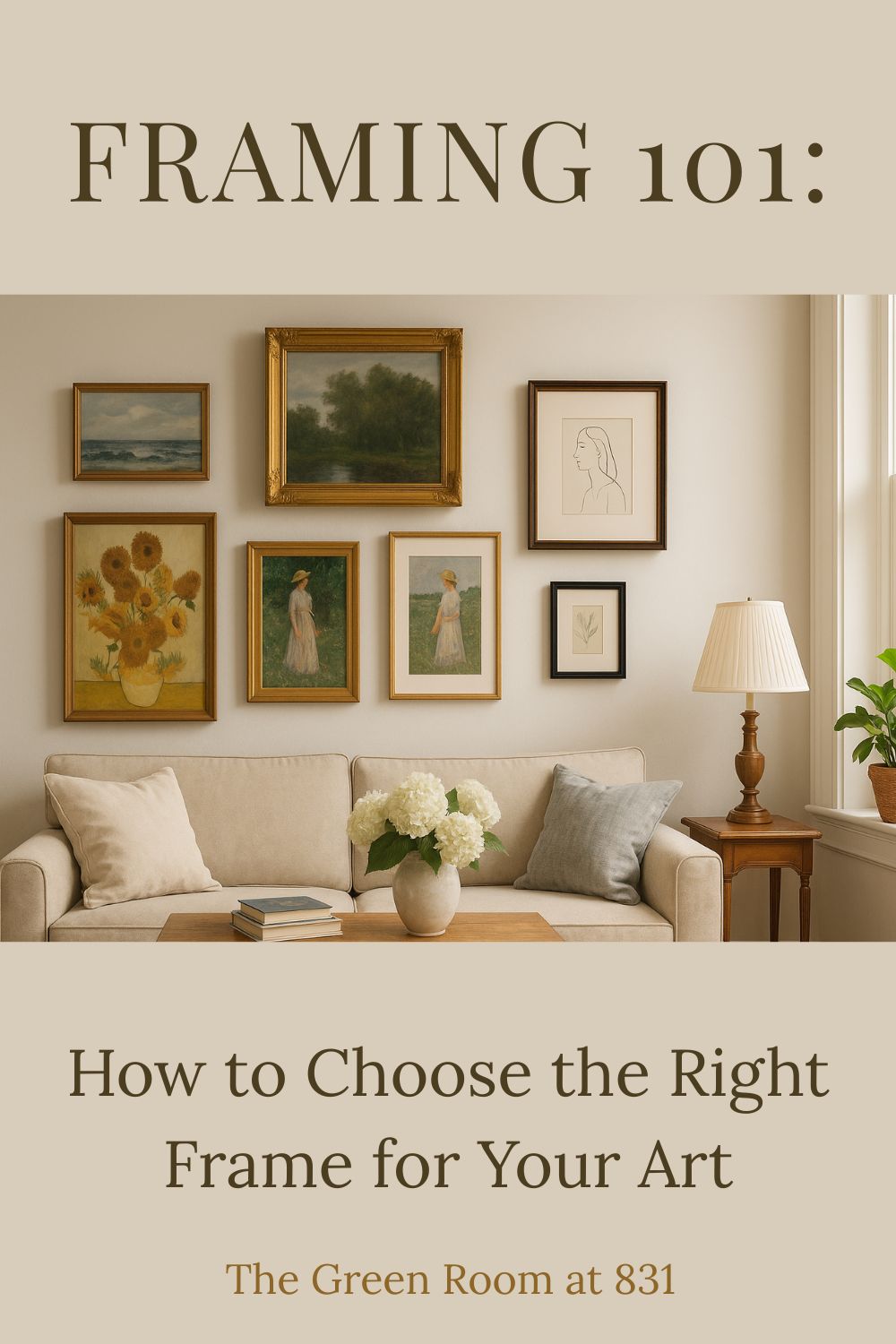
Framing 101: How to Choose the Right Frame for Your Art
Share
A frame is more than just a border—it’s the finishing touch, the quiet narrator, the element that elevates your artwork from “nice” to unforgettable. The right frame not only protects your piece but also enhances its presence, mood, and style.
Whether you’ve just acquired your first painting or are building a full collection, this guide will help you choose frames that do justice to your art—and your space.
🖼️ 1. Let the Art Lead
The most important rule? The art comes first. Your frame should enhance the artwork, not overpower it.
- Bold, graphic pieces often benefit from clean, minimal frames.
- Soft landscapes or vintage pieces pair beautifully with ornate or distressed frames.
- Photography works well in simple black or white frames, especially with a mat.
Tip: Step back and ask—does the frame support the mood of the artwork, or fight with it?

🎨 2. Consider the Style of Your Space
A frame is the bridge between your art and your room. Consider your interior aesthetic:
- Modern or minimalist spaces → sleek black, white, or metal frames.
- Coastal or cottagecore spaces → weathered wood or natural finishes.
- Classic or traditional homes → gold leaf, carved, or gallery-style frames.
Don’t worry about matching every frame in your home—but aim for a cohesive story.

📐 3. Matting Matters
Matting (the border between your art and the frame) gives your piece room to breathe and draws the eye inward.
- A white or off-white mat is timeless and lets the art shine.
- Colored mats can work—if they echo a shade within the artwork.
- Wider mats can make small works feel more substantial.
If your artwork has rich textures or edges that deserve to be seen, you might skip the mat altogether.

💎 4. Glass or No Glass?
- Paintings (especially oils and acrylics) typically do not need glass.
- Works on paper, photography, or prints do best with glass or acrylic protection.
- Consider non-glare or UV-filtering glass to protect your piece long-term and avoid reflections.

🧱 5. Scale & Balance
A too-thin frame can make a large piece feel underwhelming. A heavy frame can overwhelm a delicate sketch. Aim for proportional balance.
A good rule of thumb: the more bold or large the artwork, the more visual weight the frame should have (but not so much that it steals attention).

✨ Final Thoughts: Framing as a Form of Curation
When done right, framing doesn’t just finish a piece—it honors it.
A well-chosen frame turns your home into a gallery, your hallway into a story, and your art into an heirloom.
So take your time. Hold it up. Trust your eye. And above all—choose what feels right to you.

P.S. Want help framing your next piece? Our gallery offers expert recommendations for pairing frames with original artwork. Sign up for our email list for early access to new collections and styling tips!